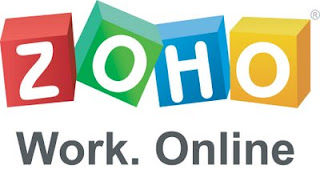Editorial by The Computer Doctor
A friend of mine recently got a surprise. She was setting up her brand new Dell Inspiron m101z with its dual-core AMD Athlon processor, 4GB RAM and Windows 7 Home Premium. She wasn't happy because it was already slower than her ancient XP Pentium M machine. Out of the blue, she got an Ubuntu Light v1.0 Setup window. What the heck?
She was puzzled, but since she's technically savvy, she quickly figured it out. Besides, she was pretty sure that Dell technical support was wrong when they first told her that "Ubuntu Light is the software for setting up themes on the system." Ah, no, it's not. Dell is now shipping Ubuntu Light as an instant-on operating system on some of its Dell laptops.
Ubuntu Light is a simplified version of Ubuntu that's for original equipment manufacturers (OEMs) only and uses the Unity interface. It's designed to boot up in as little as eight seconds on PCs with a solid state disk drive (SSD) or 15 seconds on a device with a hard disk drive. It can also access the data on the Windows part of the drive and can be enabled or disabled from the Windows 7 Control Panel.
In short, from a Windows user's viewpoint, Ubuntu Light is a feature. Worse than Dell not advertising Ubuntu Light, they're not even telling their internal staff about it. My friend knew on seeing the Ubuntu Light setup windows appear knew what Ubuntu was, and she had some idea what it would be good for. Most users would find it puzzling at best.
I asked Dell about it, and they never did get back to me. Come on, Dell — if you're going to ship Ubuntu on a Windows 7 notebook, tell people about it already. It might get you a few new customers who, even if they don't know Linux from a llama, like the idea of a fast-on operating system for Web browsing.
That's not my only problem with Dell. A friend asked me about buying a laptop with at least a 15" screen and Ubuntu pre-installed on it. Before I told him where to shop, I checked out the usual suspects: Dell, system76, and ZaReason. They all offer excellent PCs and laptops with pre-installed Ubuntu.
Then I looked a little closer at Dell's offering, the Inspiron 15N. It's a fine laptop for $624 — but what's this? The Inspiron 15 with Windows 7 Home Premium for $399? A closer look showed me that it had only 2GB of RAM instead of the 15N's 4, but when I added in two more GB of RAM, my bill still only came to $489.
What's the idea, Dell? The Windows machine is a much better deal. Or it was, anyway; even as I am writing this blog, I see that the Windows Inspiron 15 is no longer available for order online. I suspect it's sold out.
It's great that Dell sells PCs and laptops with Ubuntu already on them, but how about giving Ubuntu a fair shake? Let people know that it comes ready to use as an alternative operating system on at least one of your Windows 7 laptops, and make the Ubuntu-only systems' pricing to those that come with Windows. Both moves will help Dell's sales, and in the latter's case, it will also help their bottom line, since they don't pay Canonical as much as they do Microsoft for the operating system.
**** EDITORIAL ****
Steven, I loved your article and could not agree with your overtones of frustration with Dell more, but you are not comparing apples to apples (no reference to Macintosh intended).
No mainstream OEM PC retailer makes any money off of it's hardware. In fact to keep the cost of PC's down they actually loose money on the hardware and offer the bare minimum customer service to the point of near non-existence. How do they make money then? The Operating System vendors offer rebates and kickbacks (known in a more honest time as bribes) to the OEM manufacturers.
Use the following formula M+(OS-B)=P.
If the cost of making your PC is $800 and a OEM wholesale version of Windows 7 cost $200 and they give a rebate of $400 then you get a final price of $600.
On the other hand If the cost of making your PC is $800 and the cost of Ubuntu is $0 and the the Ubuntu rebate is $0 then your final price is $800 but to make the price any lower then your Manufacturer will have to take a hit or dip into the profit margin of their mainstream machines.
Is this fair? Of course not (they call that a rhetorical question). But to the savy consumer, why not buy your lower priced Windows machine, Dual boot Ubuntu and run the risk of possibly voiding the warranty that you probably won't need and if you do will have a major pain in the rear using and thank Microsoft for having enough market share to donate some money towards getting you that lower priced machine?





































